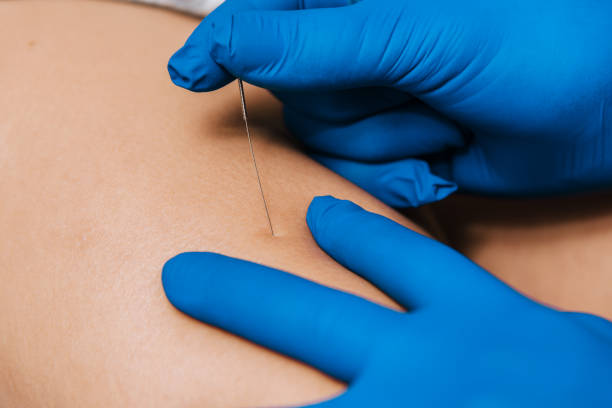Muscle pain is a common complaint that affects people of all ages and lifestyles. Whether it’s due to sports injuries, poor posture, repetitive strain, or chronic conditions, muscle discomfort can significantly impact daily life. In recent years, dry needling has emerged as a popular and effective treatment for muscle pain relief, especially in places like Abbotsford, where clinics are increasingly offering this service. But what exactly is dry needling, how does it work, and why are so many people turning to it for pain management? Let’s explore the answers in detail.
What is Dry Needling?
Dry needling is a therapeutic technique performed by trained healthcare professionals, such as physiotherapists and chiropractors. It involves inserting thin, sterile needles into specific points in the muscles, known as trigger points or myofascial trigger points. Unlike acupuncture, which is rooted in traditional Chinese medicine and focuses on energy flow, dry needling is based on modern Western medicine principles and targets the musculoskeletal system directly.
The primary goal of dry needling is to relieve muscle pain and improve function by releasing tight knots, reducing inflammation, and restoring normal muscle tone. The procedure is called “dry” because no medication or fluid is injected through the needles.
How Does Dry Needling Work?
To understand how dry needling works, it’s important to know what trigger points are. Trigger points are hyperirritable spots within a muscle that can cause pain, stiffness, and reduced range of motion. They often develop due to muscle overuse, injury, or stress.
During a dry needling session, the practitioner identifies these trigger points through palpation and patient feedback. Once located, a fine needle is inserted directly into the trigger point. This process can cause a local twitch response—a brief contraction of the muscle—which is a sign that the trigger point is being released.
The insertion of the needle stimulates several physiological responses:
- Increased Blood Flow: The needle helps increase circulation to the affected area, bringing in oxygen and nutrients that promote healing.
- Release of Tension: By disrupting the tight muscle fibers, dry needling helps the muscle relax and return to its normal length.
- Reduction of Pain Signals: The procedure can modulate pain signals sent to the brain, providing relief from discomfort.
- Decreased Inflammation: Dry needling may help reduce local inflammation, further aiding in pain relief and recovery.
Why is Dry Needling a Go-To Treatment in Abbotsford Clinics?
Abbotsford, like many communities, has seen a rise in demand for effective, non-invasive pain management solutions. Dry needling has become a go-to treatment in local clinics for several reasons:
1. Evidence-Based Results
Many studies support the effectiveness of dry needling for various musculoskeletal conditions, including neck pain, back pain, shoulder injuries, and sports-related strains. Patients often report significant improvements in pain levels, mobility, and overall function after just a few sessions.
2. Quick and Targeted Relief
Unlike some treatments that require weeks or months to show results, dry needling can provide noticeable relief in a short period. Because the technique targets specific trigger points, it addresses the root cause of muscle pain rather than just masking symptoms.
3. Minimal Side Effects
Dry needling is generally safe when performed by trained professionals. Side effects are usually mild and temporary, such as slight soreness or bruising at the needle site. There is no need for medication, making it a suitable option for those who prefer drug-free pain management.
4. Complementary to Other Therapies
Dry needling is often used alongside other physiotherapy techniques, such as manual therapy, exercise prescription, and stretching. This integrated approach enhances overall treatment outcomes and helps patients return to their normal activities faster.
5. Personalized Treatment Plans
Clinics in Abbotsford tailor dry needling sessions to each patient’s unique needs. Whether you’re an athlete recovering from an injury or someone dealing with chronic muscle tension from desk work, practitioners can customize the treatment to target your specific pain points.
Common Conditions Treated with Dry Needling
Dry needling is versatile and can be used to treat a wide range of conditions, including:
- Chronic Back and Neck Pain: Relieves tension and improves mobility in the spine and surrounding muscles.
- Shoulder Pain and Rotator Cuff Injuries: Addresses trigger points in the shoulder muscles, aiding recovery and reducing discomfort.
- Tension Headaches and Migraines: Targets tight muscles in the neck and upper back that contribute to headache pain.
- Sports Injuries: Accelerates healing and reduces pain in muscles strained during athletic activities.
- Tennis Elbow and Golfer’s Elbow: Releases tightness in the forearm muscles, easing pain and improving grip strength.
- Sciatica and Piriformis Syndrome: Relieves pressure on the sciatic nerve by relaxing the surrounding muscles.
- Plantar Fasciitis: Reduces tension in the foot muscles, alleviating heel pain.
What to Expect During a Dry Needling Session
If you’re considering dry needling at an Abbotsford clinic, here’s what you can typically expect:
- Assessment: The practitioner will take a detailed history and perform a physical examination to identify the source of your pain.
- Treatment Plan: Based on your assessment, a personalized treatment plan will be developed, which may include dry needling and other therapies.
- Needling Procedure: The practitioner will insert thin needles into the identified trigger points. You may feel a slight prick or twitch, but the procedure is generally well-tolerated.
- Aftercare: Mild soreness is common after treatment, similar to the feeling after a deep tissue massage. This usually resolves within a day or two. The practitioner may recommend gentle stretching or hydration to aid recovery.
Is Dry Needling Right for You?
Dry needling is suitable for many people, but it’s not for everyone. It’s important to consult with a qualified healthcare provider to determine if this treatment is appropriate for your specific condition. People with certain medical conditions, such as bleeding disorders or needle phobia, may need alternative therapies.
Final Thoughts
Dry needling has become a trusted and effective method for muscle pain relief in Abbotsford and beyond. Its ability to target the root cause of pain, provide quick results, and complement other therapies makes it a valuable tool in modern pain management. If you’re struggling with muscle pain and looking for a solution that’s both evidence-based and minimally invasive, dry needling may be worth considering.
Always seek treatment from a qualified professional to ensure safety and the best possible outcomes. With the right approach, you can find relief from muscle pain and get back to doing the things you love.



